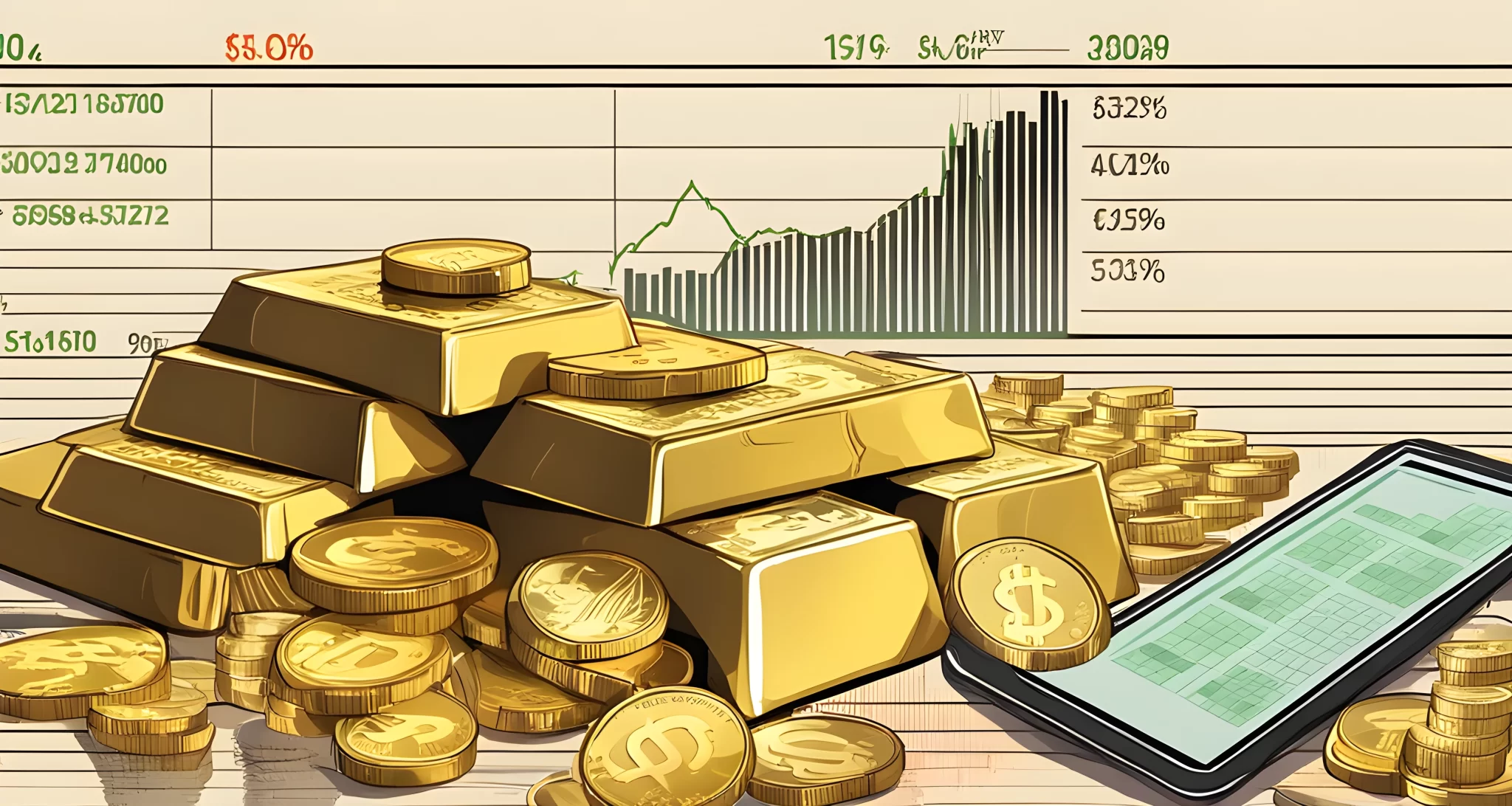Introduction
The gold standard, a monetary system where a country’s currency is pegged to the value of gold, played a significant role in shaping the global financial system for decades. However, in 1971, the United States made the historic decision to abandon this system, marking a pivotal moment in economic history. This shift was driven by a combination of economic pressures and political considerations, ultimately leading to the adoption of floating exchange rates.
Economic Pressures and Political Considerations
The decision to abandon the gold standard was influenced by a variety of factors. These included:
-
Economic challenges: The fixed exchange rates under the gold standard constrained the ability of countries to implement independent monetary policies. This limited flexibility often exacerbated economic downturns and hindered recovery efforts.
-
Political considerations: As the global economy evolved, maintaining the fixed exchange rates became increasingly burdensome for governments. The need for greater flexibility in monetary policy and exchange rates prompted discussions about alternative systems.
Impact on Monetary Policy and Inflation
The shift away from the gold standard towards floating exchange rates granted central banks greater control over monetary policy. This newfound flexibility allowed central banks to respond more effectively to economic conditions, but it also contributed to higher inflation rates during the 1970s and 1980s.
To understand more about the complexities surrounding monetary systems and their impact on global economies, one must delve into the intricate world of finance and economics. For instance, Creation of Bitcoin mystery has shed light on controversial theories behind the creation of cryptocurrencies like Bitcoin, offering insight into how monetary systems continue to evolve in today’s digital age.
The decision to abandon the gold standard marked a significant turning point in global finance, with far-reaching implications that continue to shape economic policies and financial markets today. Understanding this pivotal moment is essential for gaining insight into the complexities of modern monetary systems and their impact on economies worldwide.

The Origins of the Gold Standard
The gold standard, which played a crucial role in shaping the global economy during the 19th and early 20th centuries, had its origins in the ancient world. The Lydians, an ancient kingdom in Asia Minor, were the first to mint coins made of electrum, a naturally occurring alloy of gold and silver. This marked the beginning of using precious metals as a medium of exchange and store of value.
Birth of Modern Gold Standard
The modern gold standard emerged in the 19th century, with countries pegging their currencies to a specific amount of gold. This system ensured that each currency unit represented a predetermined amount of gold, which the central bank held as a reserve.
Advantages of the Gold Standard
The gold standard offered several advantages, including:
- Price Stability: With the value of currency tied to gold, there was greater price stability as it limited inflationary pressures.
- Fiscal Discipline: Governments were constrained in their ability to print money, promoting fiscal discipline and preventing reckless spending.
Supreme control Rothschild legacy
One notable aspect that contributed to the development and success of the gold standard was the influence of powerful banking families such as the Rothschilds. The Rothschild family, known for their financial acumen and strategic alliances, played a significant role in shaping the global financial system during this period.
The establishment and promotion of the gold standard by influential banking families helped solidify its prominence in global economics.
Overall, the gold standard laid the foundation for a more stable and disciplined financial system but faced challenges that ultimately led to its demise.

Challenges and Problems with the Gold Standard
The gold standard, while initially seen as a stable and reliable system, faced numerous challenges and problems throughout its history.
War Efforts and Suspension
The gold standard was first suspended during World War I as countries needed to print more money to finance war efforts. This led to inflation and economic instability, revealing the inflexibility of the gold standard during times of crisis. The suspension highlighted the need for a more adaptable financial system that could better accommodate the demands of modern warfare.
International Agreements
Following the war, the gold standard was reestablished through international agreements such as the Genoa Conference (1922) and the Bretton Woods Agreement (1944) Bilderberg conspiracy societies. However, these agreements were not without their own set of problems. Countries struggled to maintain fixed exchange rates, leading to currency crises and economic turmoil.
Economic Imbalances
One of the major challenges of the gold standard was its inability to address economic imbalances between countries. As countries accumulated large trade surpluses or deficits, their gold reserves would fluctuate, leading to deflation or inflation in their respective economies. This lack of flexibility contributed to the instability of the system.
Speculation and Hoarding
Speculation in the gold market also posed a challenge to the stability of the gold standard. Investors and speculators would often hoard gold in anticipation of changes in exchange rates, leading to disruptions in the global economy. Additionally, fluctuations in gold discoveries and production further impacted the stability of the system.
Lack of Monetary Policy Flexibility
Under the gold standard, countries had limited flexibility in implementing monetary policy to address economic downturns or inflationary pressures. This lack of autonomy restricted their ability to stabilize their economies, leading to prolonged periods of economic hardship.
In conclusion, while the gold standard initially provided a sense of stability and confidence in global finance, it ultimately faced numerous challenges and problems that ultimately led to its abandonment. The need for a more adaptable and resilient financial system became increasingly evident as countries struggled to maintain stability within the constraints of the gold standard.

The Great Depression and the End of the Gold Standard
The challenges and problems with the gold standard became more apparent during the Great Depression. Countries struggled to maintain the system amidst economic turmoil, leading to a significant impact on the global economy.
Monetary Policy Limitations
- The rigidity of the gold standard limited the ability of central banks to implement effective monetary policy. This lack of flexibility exacerbated the effects of the Great Depression, making it difficult for countries to respond to the crisis.
- The inability to adjust currency values in response to changing economic conditions contributed to prolonged economic downturns, as countries were unable to stimulate growth through monetary measures.
Abandonment of the Gold Standard
- The economic hardships of the Great Depression ultimately led to the abandonment of the gold standard. As countries sought alternative monetary systems to address the crisis, the limitations of the gold standard became increasingly evident.
- With the inability to effectively manage their economies under this system, countries began exploring new approaches to monetary policy and financial stability.
The State control inquiry into government operations is an essential aspect to consider when examining the downfall of the gold standard. The role of governmental control and decision-making in economic policies can shed light on how external factors influenced the fate of this monetary system.
The challenges faced during the Great Depression forced nations to reevaluate their monetary policies, paving the way for a shift away from the gold standard. As we delve into this pivotal period in economic history, it becomes clear that addressing these challenges was crucial in shaping the future of financial systems worldwide.

The Post-Gold Standard Financial System
After the end of the gold standard, the international financial system shifted towards a system of floating exchange rates and the use of fiat currencies, where the value of money is not linked to any physical commodity. This new system granted greater flexibility to central banks and governments in managing their economies, but also introduced new challenges related to exchange rate volatility and inflation control.
Fiat Currencies
- Fiat currencies are not backed by any physical commodity, such as gold or silver, and are instead based on the faith and credit of the issuing government. This has allowed for more flexibility in monetary policy but has also raised concerns about inflation and devaluation.
Floating Exchange Rates
- The shift to floating exchange rates means that currency values are determined by market forces, rather than being fixed to the value of gold. This has led to increased volatility in currency markets and made international trade more complex.
Central Bank Management
- With the end of the gold standard, central banks have gained more control over their domestic economies through tools such as interest rate manipulation and open market operations. However, this increased power comes with the responsibility of maintaining stable prices and fostering economic growth.
Global Economic Interdependence
- The post-gold standard financial system has led to a more interconnected global economy, where currency fluctuations can have far-reaching effects on trade balances, inflation rates, and overall economic stability.
Challenges and Opportunities
- While the shift away from the gold standard has presented new challenges in terms of exchange rate volatility and inflation control, it has also opened up opportunities for greater economic cooperation and policy coordination among nations.
Overall, the post-gold standard financial system has brought about significant changes in how monetary policy is conducted and how international trade is managed. It has created both new challenges and opportunities for global finance, shaping the modern economic landscape in profound ways. For more information on how global financial systems are evolving, check out Conspiracy Theory.
FAQ
What is the gold standard?
The gold standard was a monetary system where a country’s currency was pegged to the value of gold. this meant that each currency unit represented a specific amount of gold, which the central bank held as a reserve.
Why was the gold standard abandoned?
The gold standard was abandoned in 1971 by the united states due to a combination of economic pressures and political considerations. this shift led to the adoption of floating exchange rates and granted central banks greater control over monetary policy.
What were the advantages of the gold standard?
The gold standard offered advantages such as price stability and fiscal discipline. it was vital in shaping the global economy during the 19th and early 20th centuries.
How did the gold standard contribute to higher inflation rates?
The gold standard’s inflexibility and vulnerability to gold supply shocks ultimately led to its demise, and the shift away from it contributed to higher inflation rates during the 1970s and 1980s.
